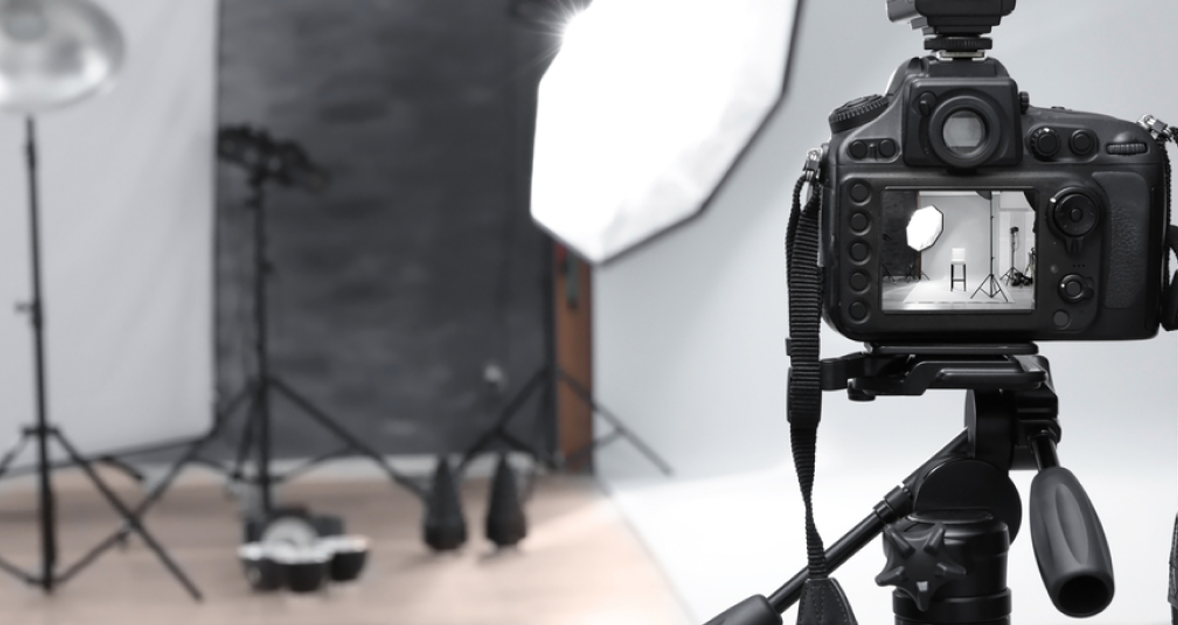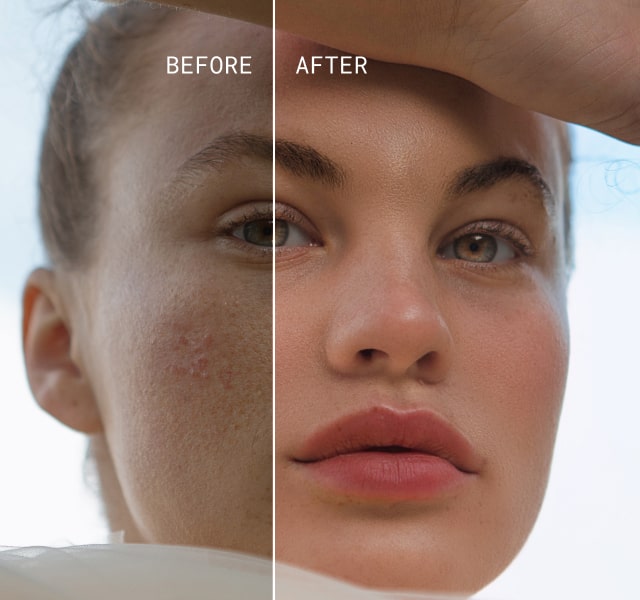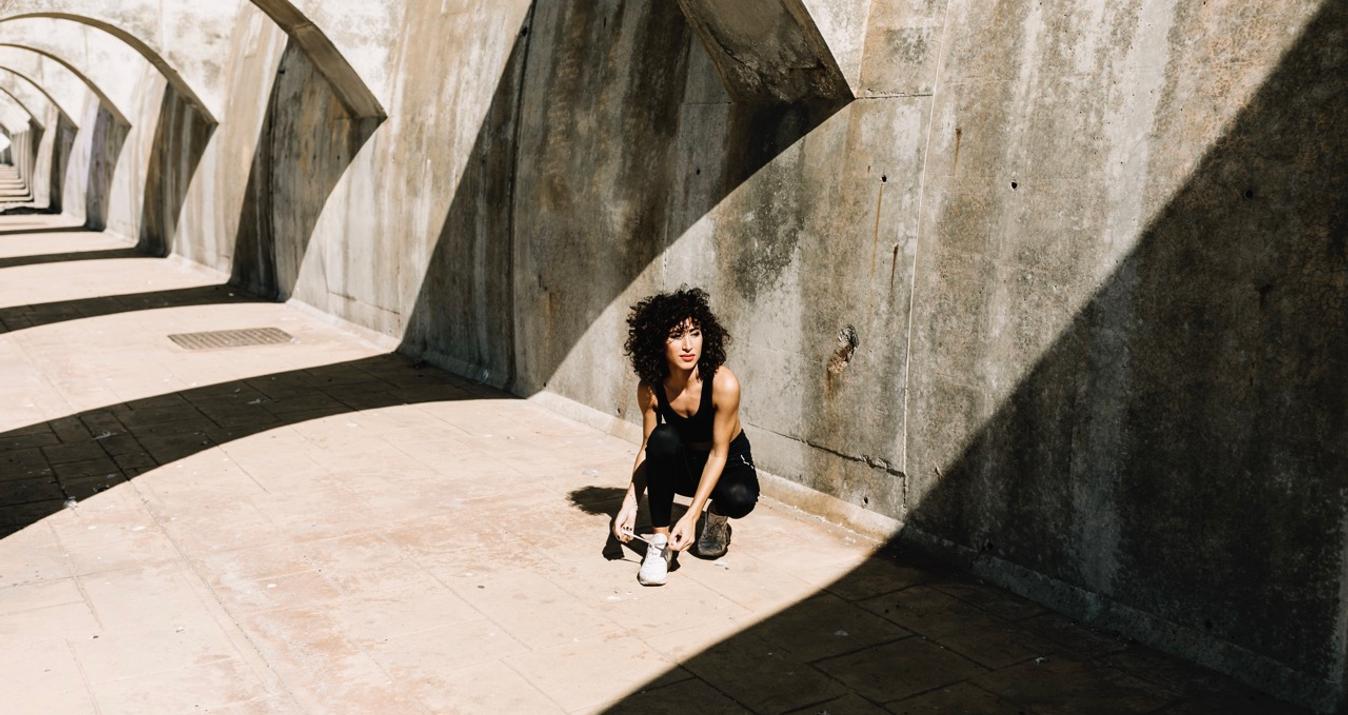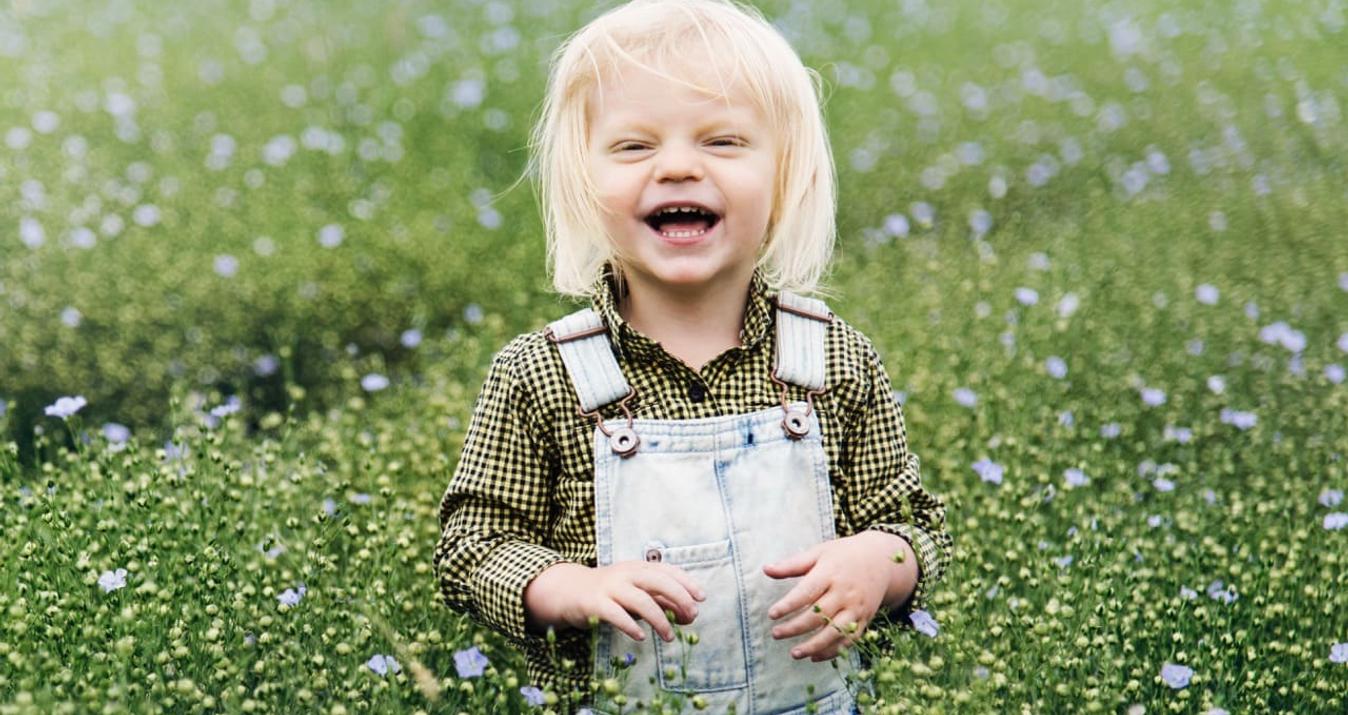Essential Studio Equipment For Portrait Photography
August 26, 2025

Are you thinking about setting up your own portrait studio? It’s an exciting step, but I know how overwhelming it can look at first. When you see pictures of professional studios packed with lights, stands, and all sorts of portrait photography accessories you can’t even name, it can feel mind-blowing. I still remember stepping into a studio for the very first time. It was intimidating, not just because I was worried about breaking something, but because I had no idea where to start with all the equipment in front of me.
The good news, both for your confidence and your budget, is that you don’t actually need much to begin with. You can create great photos with just the essentials. The extra kit is nice to have, but you can always add it gradually as you grow more comfortable and build your studio over time.
In this guide, I’ll walk you through the key portrait photography tools you need to get started, as well as a few extras worth looking forward to in the future.
Less Time Editing, More Time Creating
Try Aperty Now1. Camera and Lens
 You may already have a camera and lens from doing some outdoor portraiture, and that’s a great start. There isn’t a camera made just for studio use, especially at the budget most of us are working with. Keep shooting with the camera you have for now, and only think about upgrading later if you find your shots are lacking in quality.
You may already have a camera and lens from doing some outdoor portraiture, and that’s a great start. There isn’t a camera made just for studio use, especially at the budget most of us are working with. Keep shooting with the camera you have for now, and only think about upgrading later if you find your shots are lacking in quality.
When it comes to lenses, though, there are a few you should consider adding if you don’t have them already. Portraits tend to look more flattering when shot with 50mm or 85mm lenses because of the compression and depth of field they provide. I often use a 24-70mm lens for my work, and with a crop sensor it takes me up to 85mm. I like the versatility of a zoom, but primes do have the edge in sharpness. Recently, I’ve been using a fixed 50mm lens and I really enjoy the sharper detail and the fact that it’s lighter than my heavy zoom, which makes it easier to handle. This part really comes down to personal preference, but if you only have something like a 35mm lens, I’d definitely suggest adding at least a 50mm to your kit bag.
Of course, a sturdy tripod will certainly be useful too!
2. Lighting
 One of the most important pieces of portrait photography equipment you will own are your lights. There are two main types of setups: continuous and flash.
One of the most important pieces of portrait photography equipment you will own are your lights. There are two main types of setups: continuous and flash.
Many beginners prefer continuous lighting because you can see exactly how the scene looks before you take the shot, which makes adjusting settings much easier. That said, professionals often lean towards flash, also known as strobe lighting, as it can produce brighter, crisper light. It’s definitely worth learning how to use flash if you want to push your work towards a more professional level.
When it comes to how many lights you actually need, you can do a lot with just one. I’ve shot with one light plenty of times and managed to get strong results, although it does limit the techniques you can use. With two lights, you’ll open up far more options and be able to cover the classics like side lighting, butterfly lighting, and clamshell lighting. Those are the essential studio lighting setups to know early on.
Once you’re comfortable with two lights, you can always build on your kit later by adding rim lights or background lights. These extras are nice to have, but they aren’t essential when you’re just getting started.
3. Light Stands and Modifiers
Along with stands for your lights, you are going to need modifiers to shape the light and give you different looks for your portraits.
A good starting point for portrait photography setup is the softbox, which is a staple in most studios. Softboxes are popular because they create flattering light that smooths skin and minimises blemishes, making them perfect for beauty shots.
The most common type is the rectangular softbox, which adds the natural window light effect. It is a reliable option for evenly lit portraits and works well in most situations. Octagonal softboxes, on the other hand, give a more natural look thanks to their circular shape.
 The spread of light feels smoother, and the catchlights in the eyes appear more natural, which many portrait photographers prefer. If you want more dramatic results, you can add a grid to narrow the beam of light and increase contrast.
The spread of light feels smoother, and the catchlights in the eyes appear more natural, which many portrait photographers prefer. If you want more dramatic results, you can add a grid to narrow the beam of light and increase contrast.
Umbrellas are another great option to have in your kit. You’ve probably seen large white or silver umbrellas in studio setups. They produce a broad, soft spread of light and are extremely affordable. While they do not offer the same control as a softbox, they are lightweight, quick to set up, and still produce very flattering results.
 If I were putting together a starter kit today, I’d pick up a couple of octagonal softboxes and an umbrella. Between those, you’ll have everything you need to cover the essential lighting techniques while leaving room to experiment with different moods.
If I were putting together a starter kit today, I’d pick up a couple of octagonal softboxes and an umbrella. Between those, you’ll have everything you need to cover the essential lighting techniques while leaving room to experiment with different moods.
4. Backgrounds
 I’ve worked in studios that rely on a plain white wall, and while that can work, a proper backdrop will always give your photos a more polished finish. The problem with walls is that they scuff easily, which means extra time spent fixing them when editing studio photos. Backdrops, on the other hand, can be swapped out quickly and save you a lot of hassle, unless you really don’t mind painting your wall every so often.
I’ve worked in studios that rely on a plain white wall, and while that can work, a proper backdrop will always give your photos a more polished finish. The problem with walls is that they scuff easily, which means extra time spent fixing them when editing studio photos. Backdrops, on the other hand, can be swapped out quickly and save you a lot of hassle, unless you really don’t mind painting your wall every so often.
When it comes to colour, you don’t need to go overboard at the beginning. I recommend starting with the classics: white and black. These two will cover almost any portrait style you want to shoot, and you can add coloured backdrops later as you grow your studio collection.
5. Essential Extras
 There are always extras you’ll want in a studio, some obvious, some less so. One of the most important is a screen for tethering to your camera, whether that’s a laptop or desktop. This lets you review images as you shoot, zoom in to check details, and even review shots with your model to assess how the session is going.
There are always extras you’ll want in a studio, some obvious, some less so. One of the most important is a screen for tethering to your camera, whether that’s a laptop or desktop. This lets you review images as you shoot, zoom in to check details, and even review shots with your model to assess how the session is going.
Clips and clamps are another must-have, especially for holding fabric backdrops in place. A simple stool or chair also goes a long way, giving your model more posing options. I’ve never seen a studio without a mirror either, as both models and make-up artists need a space to get ready before stepping in front of the camera. Reflectors are essential too, helping to fill in shadows, and these can be mounted on C-stands which are versatile enough to hold all sorts of equipment and props.
Finally, don’t overlook sandbags. Lights and tripods are far too easy to knock over, and weighted bases can save you from expensive accidents. You can buy purpose-made sandbags or even make your own, either way, they’re one of those small investments that will pay off again and again.
6. The Nice-to-Haves
 As your studio grows, there are extras you can add that are not essential but will expand your creative options. I already mentioned adding more lights, such as a rim light, and you can upgrade your camera and lenses over time. Beyond that, coloured gels are a great way to experiment with creative portraits, while a beauty dish gives a more defined, dramatic look.
As your studio grows, there are extras you can add that are not essential but will expand your creative options. I already mentioned adding more lights, such as a rim light, and you can upgrade your camera and lenses over time. Beyond that, coloured gels are a great way to experiment with creative portraits, while a beauty dish gives a more defined, dramatic look.
You will also come across specialised modifiers like snoots for tight, directional light, and grids or flags for extra control. None of this is required when you are starting out. Build a solid foundation first, then add pieces that suit your style and the jobs you book.
7. Editing Software
The other half of being a portrait photographer is the editing process. Having a clear workflow means you can move through your edits quickly and spend more time shooting. One portrait retouching software I always recommend is Aperty. It allows you to achieve professional results in very little time. Tasks such as blemish removal, skin smoothing, and enhancements can be done with a single click.
Aperty uses powerful AI technology, which means you can skip time-consuming jobs like pathing altogether. It even includes make-up application tools, so if you didn’t have a hair and make-up artist on set you can add finishing touches afterwards with realistic results. I find it to be a brilliant piece of software, and if you are aiming for editorial-quality edits, Aperty is well worth adding to your toolkit.
AI Editing at the Speed of Inspiration
Try Aperty NowThe Bottom Line
 Setting up a studio is an investment, but it doesn’t need to cost a fortune to start seeing great results. The essentials, such as one or two lights and a simple backdrop, will take you a long way. As your business and portfolio grow, your equipment will grow with them. There will always be essentials and nice-to-haves, and over time your studio will naturally build into something more complete.
Setting up a studio is an investment, but it doesn’t need to cost a fortune to start seeing great results. The essentials, such as one or two lights and a simple backdrop, will take you a long way. As your business and portfolio grow, your equipment will grow with them. There will always be essentials and nice-to-haves, and over time your studio will naturally build into something more complete.
I also recommend trying Aperty, as it gives you professional results quickly and helps you spend less time editing and more time shooting. The faster your workflow, the sooner you can focus on booking more clients. Building a studio is a journey, and the best part is watching it evolve step by step. So, best of luck with yours!



